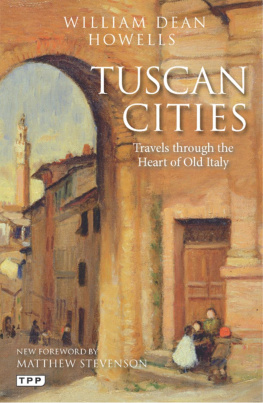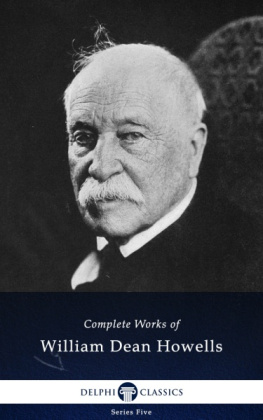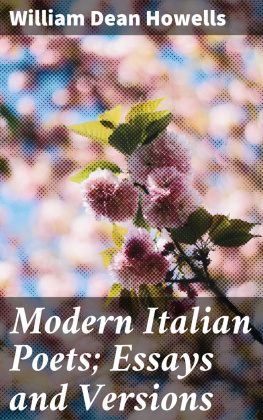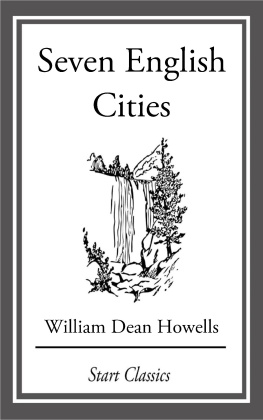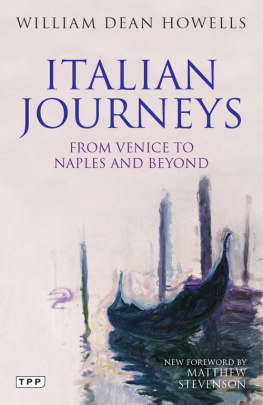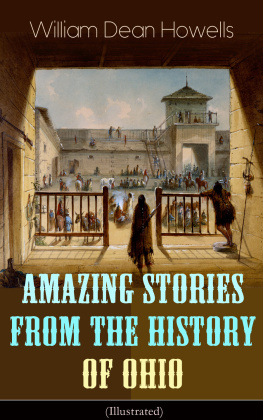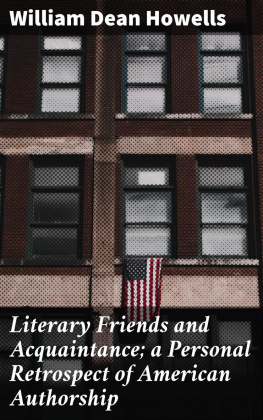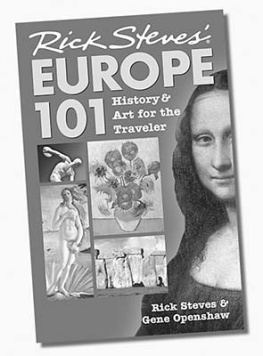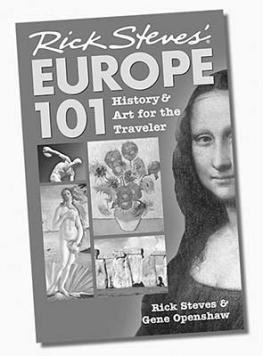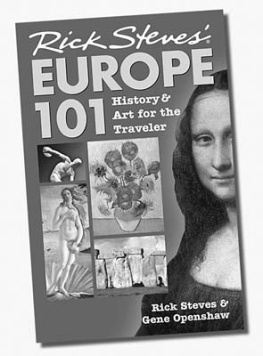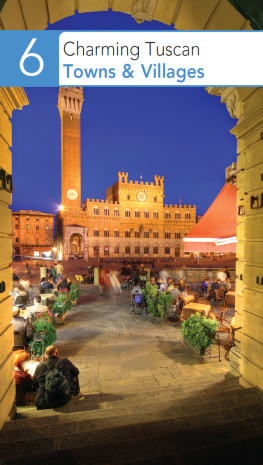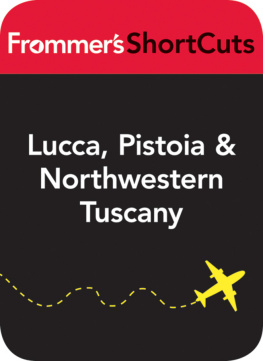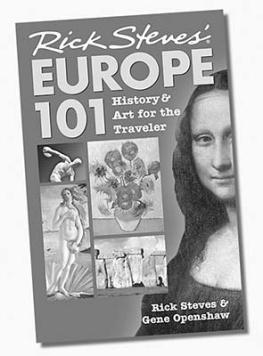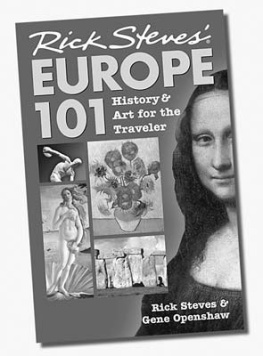William Dean Howells (18371920). A prolific writer of essays, fiction, nonfiction, poetry, memoirs, plays, and travel books, Howells was the gold standard of American letters from the Civil War until World War I. For many years he was the influential editor of The Atlantic Monthly, and from that chair befriended the likes of Mark Twain, Henry James, Bret Harte, Oliver Wendell Holmes, Ralph Waldo Emerson, and Henry Wadsworth Longfellow, all of whom, if asked, would have listed Howells as among the most influential writers of the age. He is credited with having developed a school of literature around the themes of realism. At his death he was known as the Lincoln of literature. His Italian Journeys is also available in Tauris Parke Paperbacks.
Matthew Stevenson is an American writer who lives in Switzerland. His Letters of Transit: Adventures and Encounters from America to the Pacific Isles is published by Tauris Parke Paperbacks. His most recent book is Remembering the Twentieth Century Limited. He is a contributing editor of Harpers Magazine, to which William Dean Howells contributed 335 articles between 1886 and 1920, notably for the lead column, known as the Editors Easy Chair.
Tauris Parke Paperbacks is an imprint of I.B.Tauris. It is dedicated to publishing books in accessible paperback editions for the serious general reader within a wide range of categories, including biography, history, travel and the ancient world. The list includes select, critically acclaimed works of top quality writing by distinguished authors that continue to challenge, to inform and to inspire. These are books that possess those subtle but intrinsic elements that mark them out as something exceptional.
The Colophon of Tauris Parke Paperbacks is a representation of the ancient Egyptian ibis, sacred to the god Thoth, who was himself often depicted in the form of this most elegant of birds. Thoth was credited in antiquity as the scribe of the ancient Egyptian gods and as the inventor of writing and was associated with many aspects of wisdom and learning.
TUSCAN CITIES
Travels through the Heart
of Old Italy
William Dean Howells
Foreword by Matthew Stevenson

Foreword
by Matthew Stevenson
F or the modern traveler, the road often leads to Florence. From a cruise ship moored in Livorno, its possible to inspect the Duomo, buy some souvenirs on the Ponte Vecchio, drink a bottle of cold water on the bus, and return to the ship in time for dinner and the floor show. Another way to see Florence is to check into one of the citys many elegant hotels, leave after breakfast with an armful of guide books, stand in long lines at the Uffizi Gallery, and finally escape to the relative calm and quiet of the Pitti Palace gardens in the late afternoon, when the setting sun, even in winter, gives Florence the light in August.
My own favorite visit to the city came after I left an overnight train at 6:30 a.m. and did all of my touring before noon, after which I ate a two-hour lunch at a local osteria. In the afternoon, to escape the madding crowds, I rented a bicycle and rode outside the city, in that warm Tuscan sun, to the house where Machiavelli wrote The Prince and looked down on the skyline that William Dean Howells, quoting Dante, calls the valley where never mercy is.
The key to unlocking Florence from its golden hordes is to go there with a great book, which can be read at night back in the hotel or during an afternoon rest stop in an outdoor caf. Without a narrative to focus your wanderings, Florence can easily become overwhelming, a Renaissance theme park with 10 iced drinks. Few travel companions to Florence can be more engaging than William Dean Howells, an American writer of the late nineteenth and early twentieth century, who first went to Italy in 1861 as an American diplomat, stationed in Venice.
With few diplomatic chores (he had to write an annual memo on shipping traffic and entertain visiting Americans), Howells learned Italian and fell in love with the fractured country that recently had unified. His first two books were Venetian Life and Italian Journeys (available in Tauris Parke Paperbacks). In his long career he returned often to Italy, which became an emotional hometown, although one far from his roots in Ohio. He liked to say that he was torn between two homesicknesses: the longing for America, the desire to stay in Italy.
A prolific writer of essays, fiction, nonfiction, poetry, memoirs, plays, and travel books, Howells was the gold standard of American letters from the Civil War to the First World War. For many years he was the influential editor of The Atlantic Monthly, and from that chair befriended the likes of Mark Twain, Henry James, Bret Harte, Oliver Wendell Holmes, Ralph Waldo Emerson, and Henry Wadsworth Longfellow, all of whom, if asked, would have listed Howells as among the most influential writers of the age. He is credited with having developed a school of literature around the themes of realism. Writers such as F. Scott Fitzgerald, Ernest Hemingway, Theodore Dreiser, John Updike, and Edith Wharton later wrote in the style that Howells pioneered with his fiction (The Rise of Silas Lapham, A Hazard of New Fortunes, etc.) and his travel narratives, including Tuscan Cities. He was early in writing about business, divorce, and, on the road, in a conversational tone. He may have fallen from favor with modern readers because, with so many authors following his style Paul Theroux and Bill Bryson are among his heirs in travel writing his templates pale in comparison with the shinier, newer copies.
Howells came to Tuscany in 1883, to recharge his batteries after many years at the The Atlantic Monthly and as the high judge of American letters. He had decided to spend more time on his own fiction and essays and was drawn to the idea that a winter in Florence, Siena, and Pisa might be easier to take than those he knew so well in Boston. He also chose to return to the themes of Venetian Life, which is an interior view of the city seen through curious, foreign eyes.
The charm of Howells is that he is as likely to say hes bored in an art museum as he is to describe the chapel where Dante Alighieri was (unhappily) married. To tell the truth, he confesses, the Duomo at Florence is a temple to damp the spirit, dead or alive, by the immense impression of stony bareness, of drab vacuity, which one receives from its interior, unless it is filled with people.
What sets Howells apart from his American contemporaries except for Mark Twain and his Innocents Abroad is that he uses his travel books as rough drafts for his novels, and spends as much time examining character (as would Tolstoy, another of his favorites) as he does the cathedrals. In Tuscan Cities, Howells has wonderfully evocative sketches of Dante, Cosimo the Elder, Lorenzo the Magnificent, and Savonarola, who come alive on his walks across Florence, known then to only a handful of travelers. At Dantes house, struck by the village dimensions of the city, he writes: A life of the ordinary compass witnessed so many atrocious scenes, that Dante, who peoples his Inferno with his neighbors and fellow-citizens, had but to study their manners and customs to give life to his picture.
Visiting their opulent palaces across Florence, Howells describes the vanities and brutalities of the Medici, saying of Cosimo that he is a man capable of striking his son dead in his mothers arms, as literally happened. Moving through the family haunts, Howells writes: From the first Medici to the last, they were nearly all hypocrites or ruffians, bigots or imbeciles; and Lorenzo, who was a scholar and a poet, and the friend of scholars and poets, had the genius and science of tyranny in supreme degree, though he wore no princely title and assumed to be only the chosen head of the commonwealth. As if in line at the Uffizi and looking down the long portico, Howells remembers the violence that has often accompanied the poetry in these houses. He reflects: Plenty of men have been hung from its windows, plenty dashed from its turrets, slain at its base, torn in pieces, cruelly martyred before it; the wild passions of the human heart have been beaten against it like billows; it has faced every violent crime and outbreak. Yet it is sacred, and the scene is sacred.

